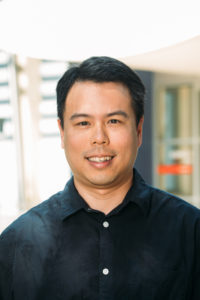A Griffith University researcher has won an $860,000 Australian Research Council Future Fellowship to develop an environmentally friendly method to produce thin-layered 2D nanomaterials used in everything from sensors to energy storage devices.
Two-dimensional (2D) nanomaterial refers to ultra-thin sheets of a material such as graphite or titanium carbide that are as little as one atom thick (~ one nanometer or one millionth of a millimeter).

Dr Yulin Zhong from the Centre for Clean Energy and Environment and the School of Environment and Science
“Peeling conventional materials into atomically thin nano-layers reveals extraordinary electrical and thermal conductive properties, many times higher than parent materials,” said Dr Yulin Zhong from the Centre for Clean Environment and Energy and the School of Environment and Science.
“When incorporated into energy storage, energy conversion and flexible electronic devices, 2D nanomaterials can substantially boost the device performances. The use of 2D nanomaterials in rechargeable batteries, for example, greatly increases the charging speed and capacity.”
The typical ways to break materials down into 2D nanomaterials rely on harsh chemical processes involving toxic strong acids and oxidants. This requires the costly cleanup and disposal or recycling of chemical waste products after the reactions.
“The electrochemical method we are developing replaces the harmful acids and oxidants used to produce 2D nanomaterials, with electrical power, minimising chemical wastes,” Dr Zhong said.
“The salt solutions we employed in this process can be reused many times over with very little product cleaning required, making the electrochemical method a greener and more cost-effective way to produce 2D nanomaterials.
“The advent of these advanced production and manufacturing technologies will accelerate the technological development in areas such as energy storage and health monitoring.
“Thus development of this electrochemical process is win-win, using a more environmentally sustainable methodology to impart superior properties to traditional materials, and will directly support the growth of Australian high-tech companies.”
